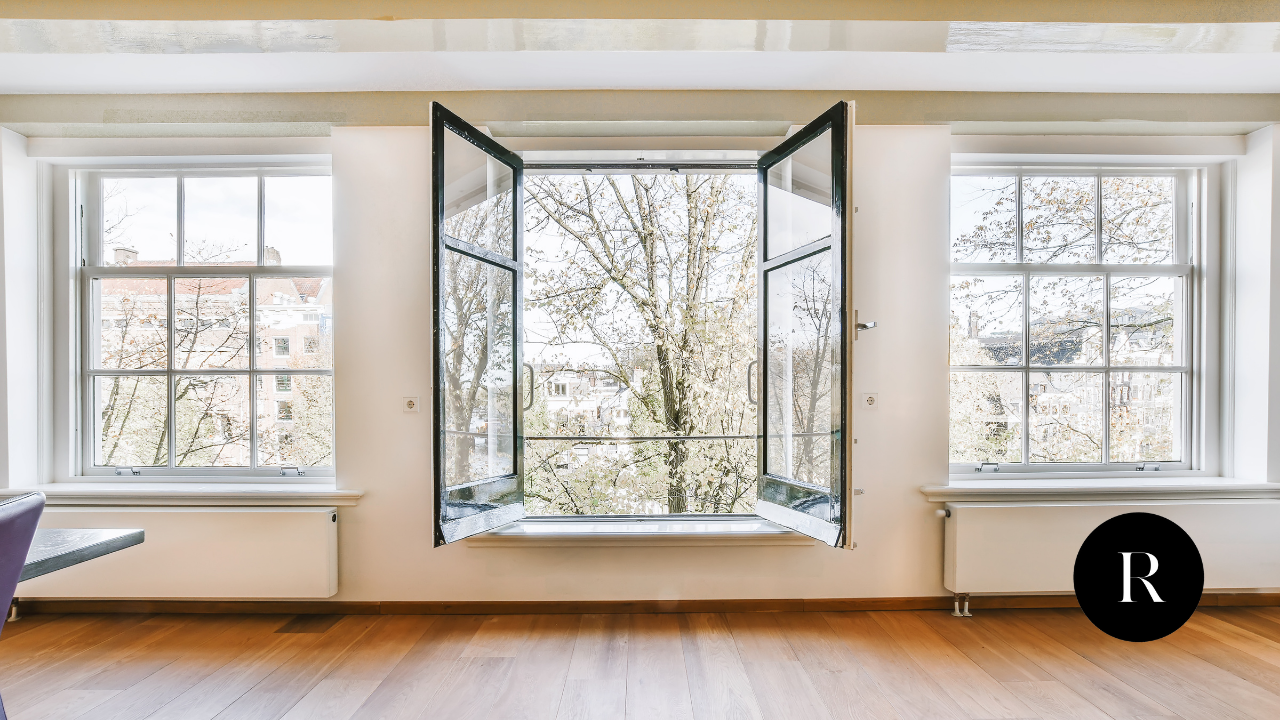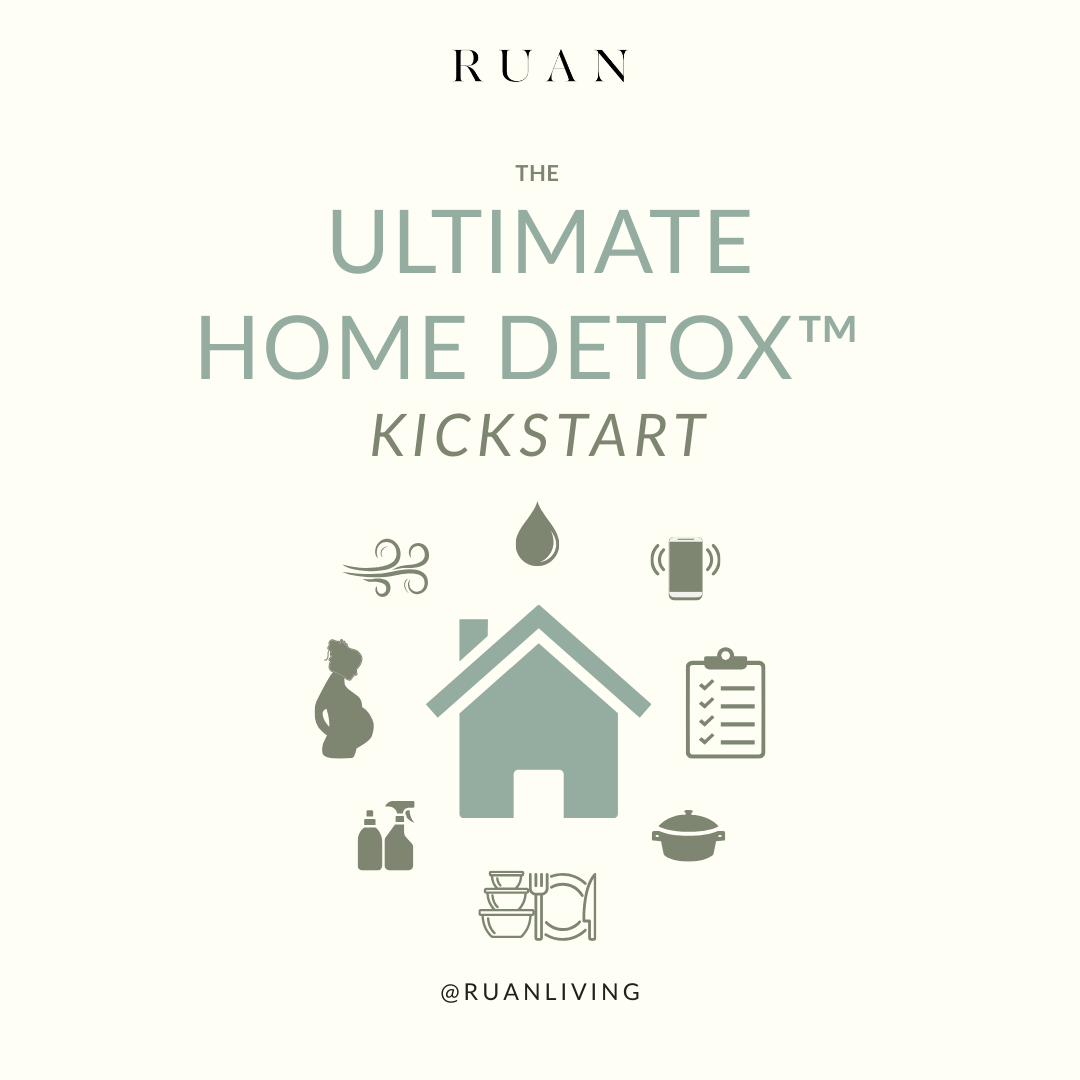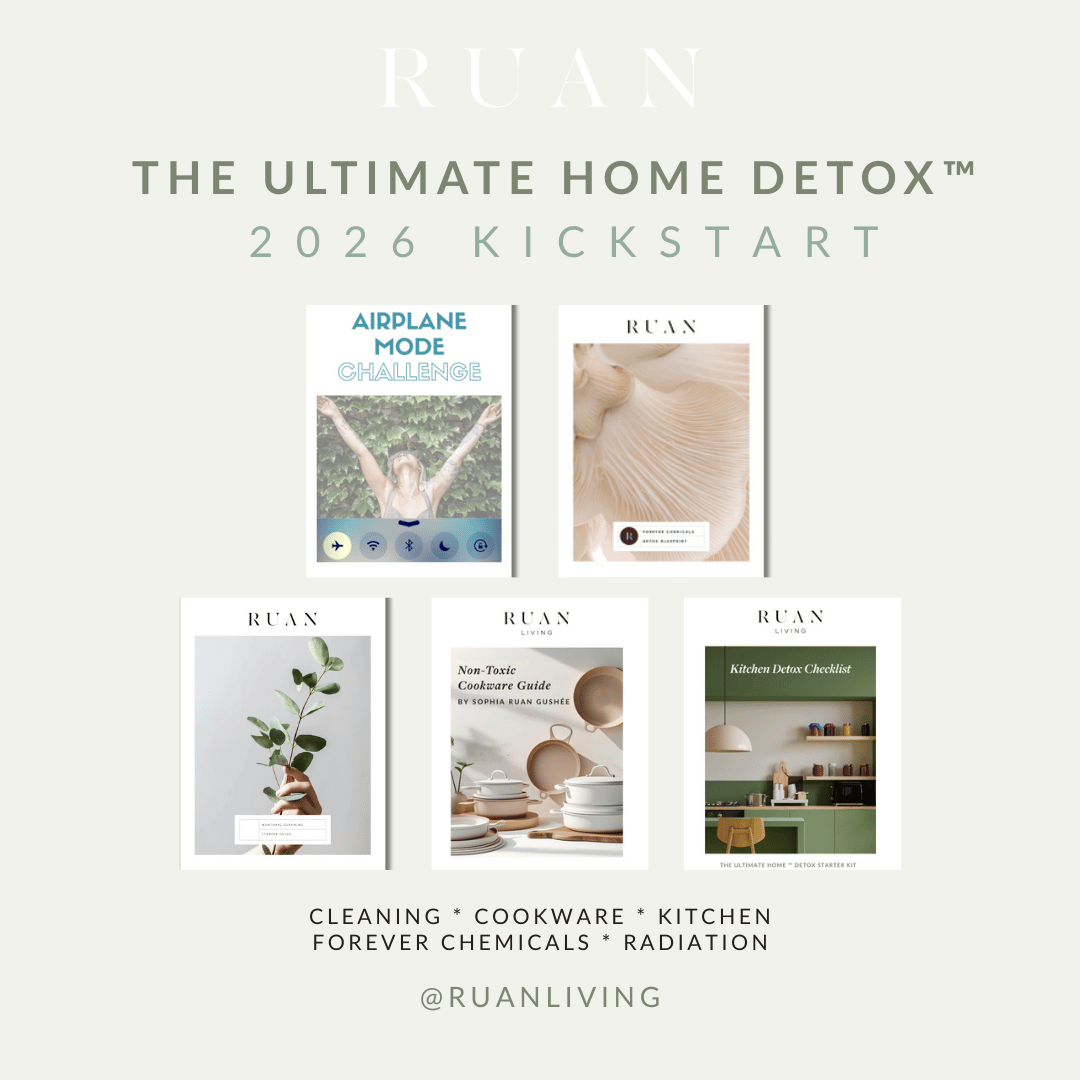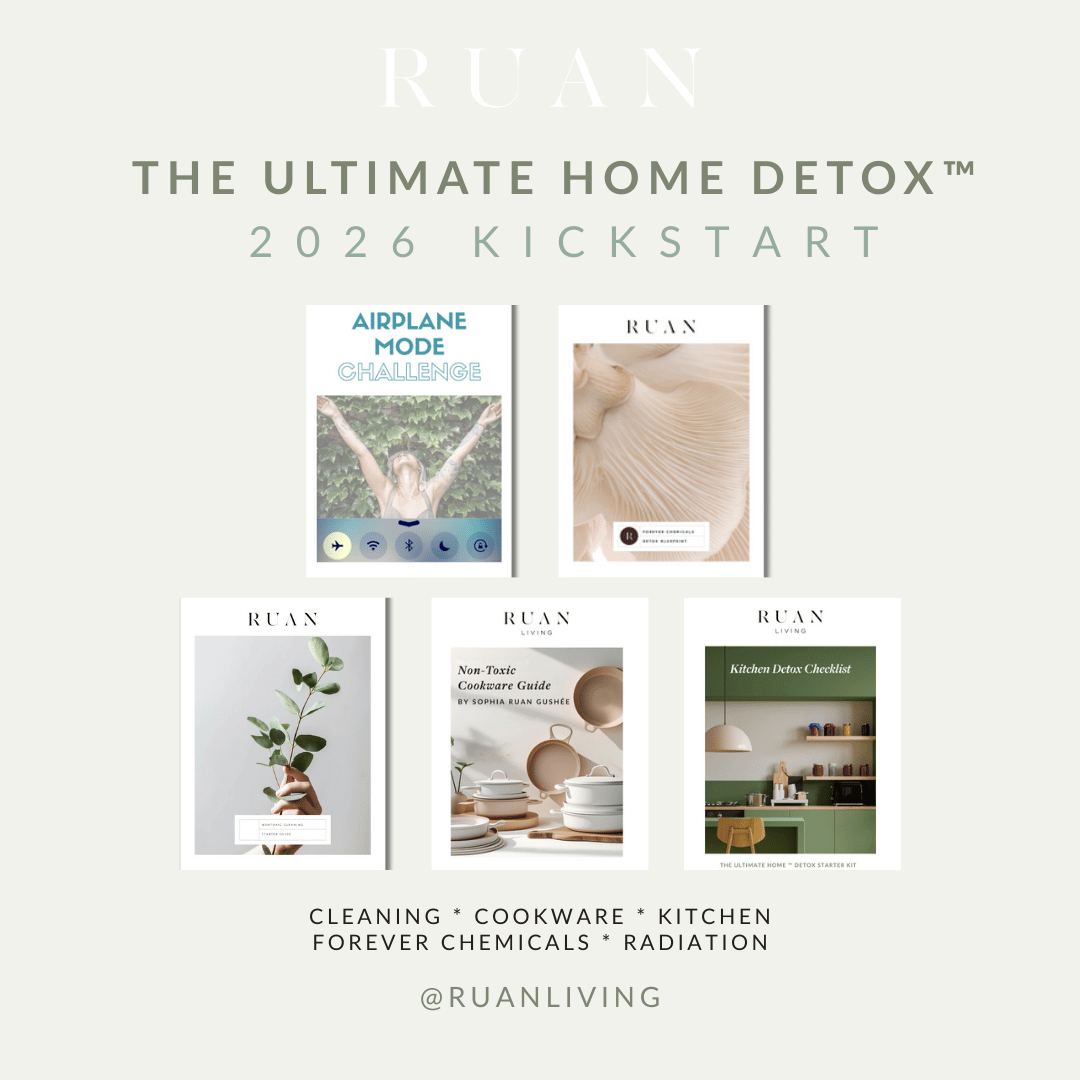
5 Tips to Detox Your Indoor Air Quality | Ruan Living | Sophia Ruan Gushée
Aug 03, 2022Did you know that indoor air tends to be at least two to five times more polluted than outdoor air — even in the most industrialized cities? 😱
I know this will probably be a big shock for a lot of you, as it was for me. My journey with detoxifying mine and my families lives has been a long one, but my true understanding of the impacts of indoor air quality began about 12 years ago…
Where it All Began
When my daughter was around 2 years old, I found myself in her room checking on her, as mothers do whilst she slept, and I started noticing things:
- Her colorful walls
- Her toys
- The carpet on the floor
And I started to realize…
“I had never opened the windows in her bedroom for over two years.”
We live in New York City and outside our apartment we often have lines of buses and cars waiting for the red light to turn green. My gut instinct thought that I was protecting my daughter's lungs by not opening her windows. Little did I know, I was wrong.
As I looked around the room, I started to see her things as sources of toxic exposures. I had learned that toxic fumes and particles can be released from them—from the paint on the walls, the carpets, the mattresses and much more. As I realized all the sources in her room of toxic exposures, I started to be really bothered that I had never opened the windows in her room. 🪟
This led me to go to the computer and research indoor air quality. And it was very upsetting to learn that it would have been much healthier for my daughter if I had simply opened the windows more regularly.
I was so frustrated by that experience, that I've become really passionate about helping people with simple tips that can make a big difference.
“But what’s wromg with indoor air quality, surely its better than the car fumed filled air that is outside?” - you might ask…
But most people don't think about the toxic fumes, compounds and even electromagnetic fields inside their home because they're invisible. And there's the assumption that those risks are safer inside your home than outside. But that's just not true. You know, before COVID…
“it was estimated that we spend an average of 90% of our time indoors”
…and since COVID entered our lives, an even greater portion of that time is in our home. So your home's indoor air quality is vital to your good health.
Tip Number One: Ventilate
It sounds simple, but I see that a lot of people don't do it. Earlier, we talked about the idea that things in our homes like the paints on our walls, our carpets, mattresses, and our upholstered furniture, they emit toxic fumes.
Well, keep in mind that over the past few decades, our built environments have become a lot more energy-efficient, and…
“while that's considered great for our planet, it's not so great for human health.”
You want to be mindful about when you open your windows, for example, if it's allergy season and someone in your home has allergies, then you want to be mindful of the allergens outside.
If you live in a rural area, then you want to be mindful of whether pesticides are being sprayed, and if so, then get to know the schedule and crack open the window when outdoor air quality is not as toxic - maybe in the middle of the night when you're sleeping. 🛌
If you live in a city, then peek outside to see if there is a traffic jam, if there are busses and cars that are standing there emitting fumes, then wait till there isn't the traffic outside.
Lastly, you're going to want to ventilate when there's combustion activity. When you're cooking on the stovetop, if you are using a fireplace, if someone's smoking (hopefully that doesn't happen in your home), or if you're burning candles. Whenever there is the burning of something, most likely toxic compounds are being released, so those are good times to ventilate.
Tip Number Two: Be Mindful of What You're Burning
I know a lot of people burn candles. But a lot of people don’t know that a lot of candles are made of petroleum-based ingredients. 🕯
Also, some candle wicks have been found to have blood in them! 🩸
Yes, blood.
So you want to be aware of what you're burning, recognizing that any time you’re burning something, toxic compounds tend to be emitted. And if you're using a fireplace, try and use all-natural wood rather than manufactured wood, it's just hard to know if synthetic wood is safe.
Tip Number Three: Be Mindful of What You're Spraying
Be mindful of what you’re spraying and who you're spraying around. It’s time to star paying more attention to the products you soray around yourself and your house. Make sure you read the ingredients and you'll notice that there are a lot of chemicals in these spray products.
And when you spray them in the air, people can inhale them and the ingredients in the products can then circulate throughout our bodies. The impact on our health is not known, it's not normally studied so it's just an unknown risk.
So, my best recommendation for this is to conduct a Love Test - which is something I do. It's when I ask myself, after learning about a toxic exposure…
“do I LOVE it or do I NEED it?”
And if I don't love it or need it, then I either get rid of it right away or phase it out. And if you love it, just be mindful of where you're spraying it.
For example, I wouldn't spray things in a children's bedroom or in their playroom. I would also stop and consider, can I spray this outdoors? Like if you're using hairspray, is it possible to spray it outdoors?
So there are ways to reduce your toxic exposures to the things that you love.
You can come up with solutions to…
“reduce the exposures to those who are especially vulnerable”
…like children and pregnant women. And you can wear a face mask now when you're spraying. It's so normal! 😷
Tip Number Four: Have a No Shoes Policy for Your Home
The bottom of shoes have been found to track in lots of toxic chemicals and heavy metals, including pesticides banned decades ago, coal tar, which is a carcinogen that is found in materials used to pave our roads and driveways, and even heavy metals like lead. So no shoes inside the house!
Tip Number Five: Curate the Things in Your Home
It's a safe bet to assume that…
“almost everything in your home contributes to indoor air pollution.”
So, conduct the love test: if you don't love it or need it, then get rid of it. Toxic exposures inside your home are just another reason to declutter.
In Summary
So let's recap those five must-follow tips:
- You're going to ventilate especially when there's combustion activity or if you're cleaning whenever there are fumes.
- You're going to be mindful of what you're burning.
- You're going to be mindful of what you're spraying and who might be inhaling what you're spraying.
- You're going to have a no-shoes policy at home.
- You're going to curate what you have in your home, so it's filled with what you love and need - and buy less stuff.
If you follow these five steps, you'll be off to an excellent start to improving the indoor environment of your home.
Thanks so much for reading my blog. If you don't want to miss out on new content to help you detox your home, diet, self-care and technology, then check out the link and make sure you stay connected: CONNECT
I'll see you next time,
Sophia Ruan Gushée
View this post on Instagram



